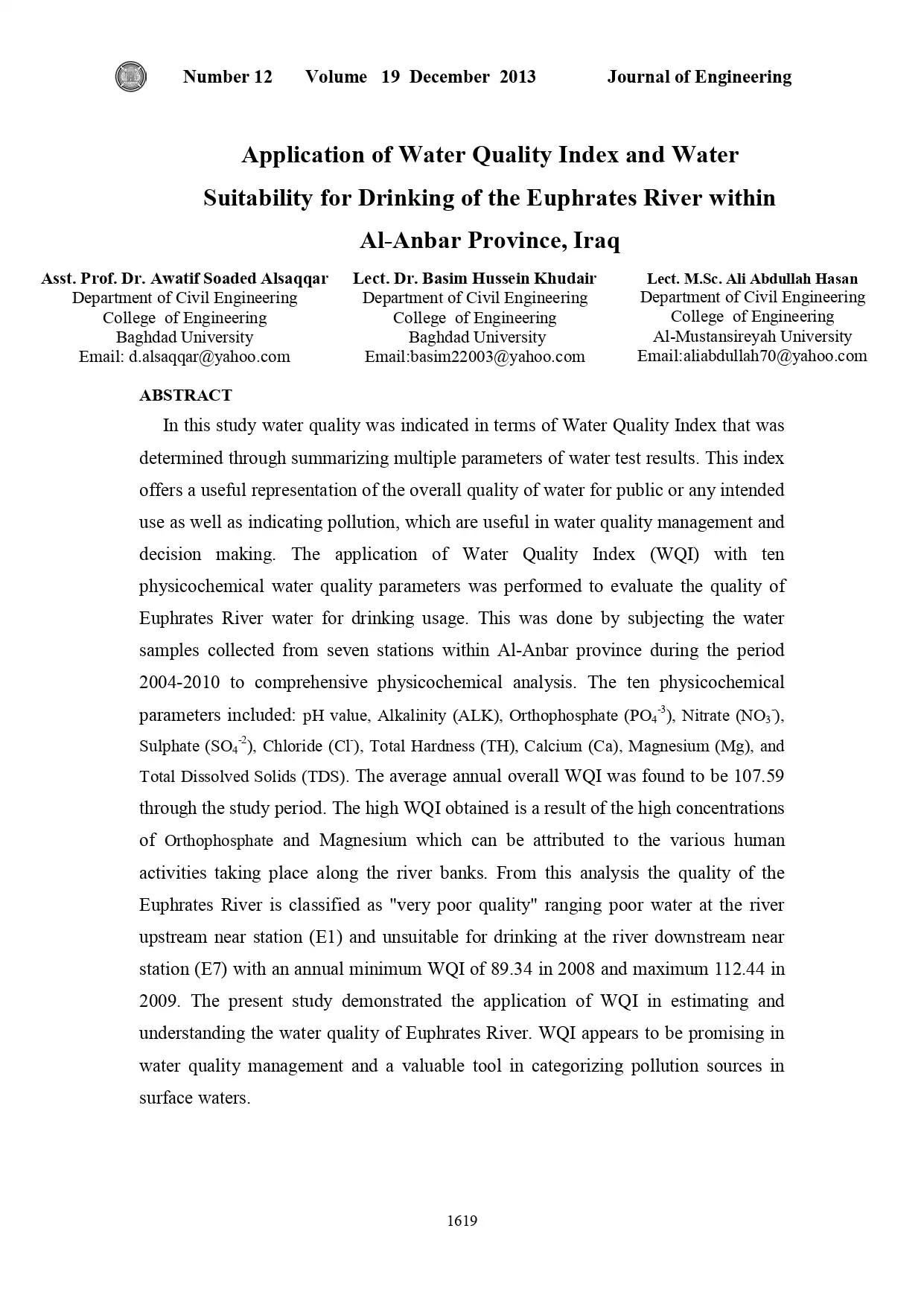Optimization Of Chemical Dosing In Water Treatment For Enhanced Coagulation/Softening As It Pertains To Dbp Removal
Source : https://gradschool.missouri.edu/
Author : COLLEEN M. KENNY
Abstract
Treatment facilities out of compliance with EPA regulations are often not using optimal chemical treatment. Determination of the most effective chemical type, combination and concentration can aid in reduction of disinfection by-product precursors. The effects of optimal chemical treatment using enhanced coagulation and enhanced softening was tested on three surface waters (two reservoirs and one lake sources), and one ground water (alluvial wells). Results indicated enhanced coagulation was more effective at removing DBP precursors from waters with higher initial UV-254 absorbance values and lower alkalinities while enhanced softening was more effective for waters with lower initial UV-254 absorbance values and higher alkalinities. In a number of cases, ferric salts outperformed aluminum salts at reducing the DBP formation potential. Redox potential measurements were added to the list of analyses to determine trends and the feasibility of using this parameter as an additional indicator of process efficiency. Redox potential indicates a transfer of electrons similar to the transfer of H+ indicated by pH. It is expected that Eh will trend as the inverse of pH when explicit oxidation or reduction reactions are not taking place. However, this research presents that under constant pH conditions, the Eh readings seem to indicate the destabilization and stabilization processes expected during the coagulation step in drinking water treatment. Comparison of the Eh readings from the start of various treatment stages to the end provides some indication of the effectiveness the enhanced coagulation or enhanced softening process has on the removal of organic precursors for disinfection by-products.
Only logged in customers who have purchased this product may leave a review.
Related products
Arsenic Removal From Drinking Water By Advanced Filtration Processes
Arsenic Removal From Drinking Water By Advanced Filtration Processes
A Study on the Introduction of Artificial Intelligence Technology in the Water Treatment Process
A Study on the Introduction of Artificial Intelligence Technology in the Water Treatment Process
Inorganic Contaminant Removal
- Inorganic contaminant treatment selection considerations
- Advanced inorganic contaminant removal chemistry terminology
- Advanced inorganic contaminant removal chemistry explanations
- Conventional filtration and how it relates to inorganic removal
- Detailed information on treatments for iron and manganese removal
- Detailed information on treatments for hardness removal
- Detailed information on inorganic contaminant monitoring protocols
- Detailed tables on the following topics:
- Sources of 26 inorganic contaminants
- Common secondary standards with effects, inorganic contributors and indications
- Various treatment technology options to consider for 24 inorganic contaminants
- Potential forms of iron and manganese
- Iron and manganese sampling procedures
- Iron and manganese oxidant selection criteria
- Iron and manganese theoretical (initial) dosing criteria
- Potential treatments for less common inorganics
- Potential treatments for miscellaneous trace metals
Inorganic Contaminant Removal
- Inorganic contaminant treatment selection considerations
- Advanced inorganic contaminant removal chemistry terminology
- Advanced inorganic contaminant removal chemistry explanations
- Conventional filtration and how it relates to inorganic removal
- Detailed information on treatments for iron and manganese removal
- Detailed information on treatments for hardness removal
- Detailed information on inorganic contaminant monitoring protocols
- Detailed tables on the following topics:
- Sources of 26 inorganic contaminants
- Common secondary standards with effects, inorganic contributors and indications
- Various treatment technology options to consider for 24 inorganic contaminants
- Potential forms of iron and manganese
- Iron and manganese sampling procedures
- Iron and manganese oxidant selection criteria
- Iron and manganese theoretical (initial) dosing criteria
- Potential treatments for less common inorganics
- Potential treatments for miscellaneous trace metals














Reviews
There are no reviews yet.